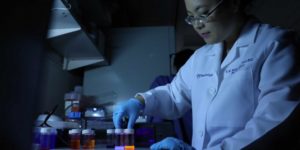Scientists Optically Clear Blood Clots To Learn Their 3D Structure
A new method that turns clots in the blood optically clear is enabling scientists to utilize dominant optical microscopy methods to learn the 3D organization of hazardous clots for the first time in the history. Even though clots in the blood discontinue bleeding post injury, clots that chunk blood flow can be responsible for heart attacks and strokes.
The new method might make it likely to use enhanced light microscopy methods such as confocal microscopy to associate clinical indications with the 3D arrangement of patients’ clots. It is ordinary for cardiologists to get rid of blood clots jamming the arteries of individuals who have gone through strokes and heart attacks.
“We can probably examine the structure of the clot from a patient and seek to understand why it turned out to be such an issue,” claimed John W. Weisel of the School of Medicine, University of Pennsylvania. “A more comprehensive understanding of different structures of clot might disclose why pieces of definite clots can break away, resulting to possible lethal complications. Sooner or later, this knowledge can result to enhanced ways or treatments to avoid clots from causing damage.”
In The Optical Society journal, Jeremiah Zartman of the University of Notre Dame and Biomedical Optics Express reported on an optical clearing technique, which enables up to 1 millimeter of microscopic imaging into a clot. Biomedical Optics Express is a mutual group from the labs of Mark Alber and Weisel’s lab of the University of California, Riverside. This optical clearing technique is a noteworthy development over the traditional 0.02 millimeters. They weathered the new technique on clots that were almost 1 millimeter thick and 5 millimeters in diameter, which were formed outside the body, using human blood and mouse.
“The molecule heme containing iron, which is present in red blood cells, makes the process of optically imaging the clots very difficult,” claimed Zartman. “Our technique, named as cClot, is well-organized at getting rid of the heme and making the entire clot clear without altering its 3D arrangement.”
Fat tissue is hard to image with optical methods since it scatters or absorbs light. For methods that utilize fluorescent probes to label tissue and cells, this indicates that the laser light required to stimulate the fluorescence cannot make contact deep within the tissue. Hence, fluorescence is engrossed before it makes contact with the camera.
Well, the invention of this method is surely going to be a boon for many people.

